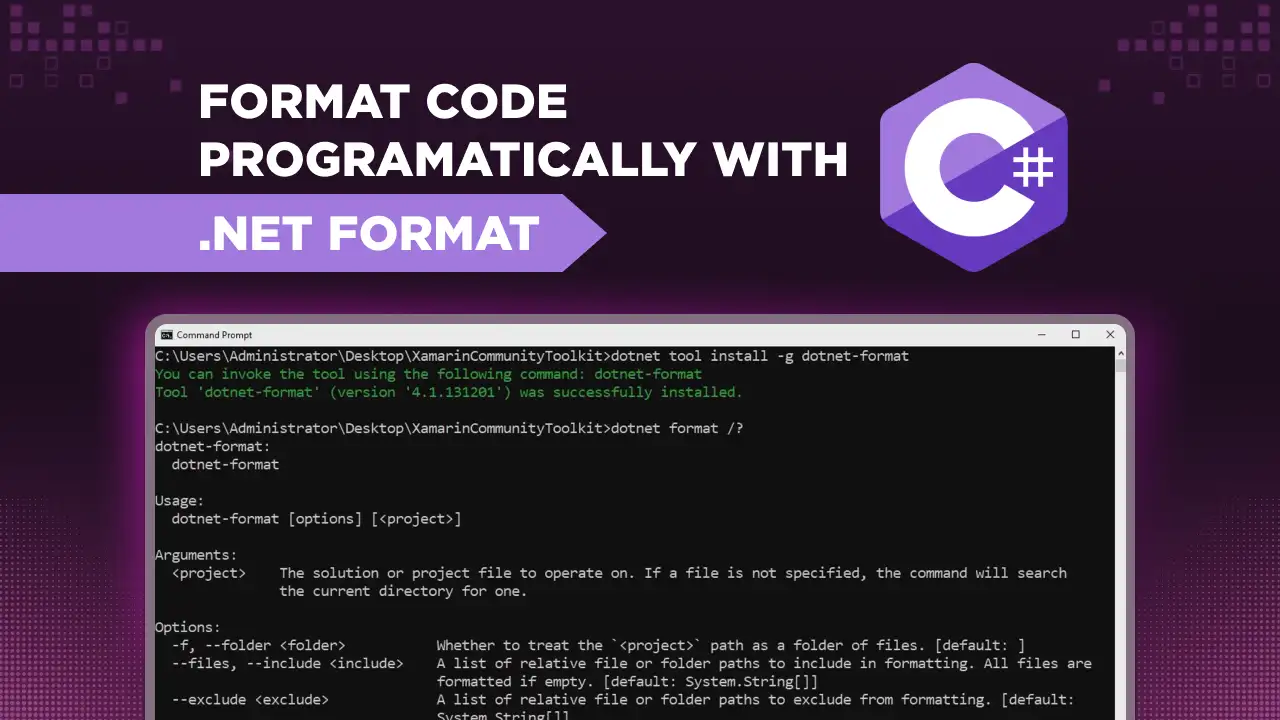Configuring Errors and Warnings in C#
Configuring errors and warnings in C# is a crucial aspect of maintaining robust and reliable code. In C#, the compiler and Roslyn analyzers provide warnings to alert developers to potential issues in their code. By configuring these warnings to be treated as errors, developers can enforce stricter coding standards, ensuring that minor issues are addressed before they escalate into more significant problems.
Derek Comartin, on his CodeOpinion YouTube channel, provides valuable insights into how these warnings can be configured to be treated as errors, thereby enforcing stricter coding standards. This article, inspired by Derek's video "Configuring Errors and Warnings in C#," offers a comprehensive guide to implementing these practices to ensure a more robust development process.
Understanding Warnings and Errors
In the video, Derek introduces the concept of reporting compiler or Roslyn analyzer warnings as errors. He explains that it's a straightforward process that can help prevent future issues. For instance, when working with async methods, forgetting to use the await keyword can lead to potential bugs. Derek demonstrates a scenario where his method SaveChangesAsync triggers a warning because it's not awaited. He emphasizes the importance of addressing such warnings early to ensure that they don't turn into bigger issues down the line.
This approach helps improve code quality, maintainability, and overall system stability. Whether dealing with configuration files, exception handling, or system settings, understanding how to manage these warnings effectively is key to building resilient applications.
Converting Warnings to Errors
To convert warnings to errors, Derek suggests modifying the project file (.csproj). He shows how to add a <WarningsAsErrors> element within the <PropertyGroup> of the project file. Specifically, for the warning CS4014 (generated when await is missing), adding this element converts the warning to an error, causing the build to fail if the issue persists. This approach enforces stricter coding standards and helps catch potential errors early in the application development process.
<PropertyGroup>
<WarningsAsErrors>CS4014</WarningsAsErrors>
</PropertyGroup><PropertyGroup>
<WarningsAsErrors>CS4014</WarningsAsErrors>
</PropertyGroup>Applying the Concept to Roslyn Analyzers
Derek extends this approach to Roslyn analyzers, which also produce warnings. He uses the Microsoft Visual Studio Threading Analyzer package as an example.

By adding this package to the project and reintroducing the async issue, Derek highlights how Roslyn analyzer warnings can also be turned into errors. This is particularly useful for teams that rely on these analyzers to enforce coding standards and practices. By treating these warnings as errors, developers can ensure that the code adheres to the framework-defined guidelines and avoid potential issues in production.
<ItemGroup>
<PackageReference Include="Microsoft.VisualStudio.Threading.Analyzers" Version="16.10.56" />
</ItemGroup>
<PropertyGroup>
<WarningsAsErrors>VSTHRD103</WarningsAsErrors>
</PropertyGroup><ItemGroup>
<PackageReference Include="Microsoft.VisualStudio.Threading.Analyzers" Version="16.10.56" />
</ItemGroup>
<PropertyGroup>
<WarningsAsErrors>VSTHRD103</WarningsAsErrors>
</PropertyGroup>Ignoring Specific Warnings
There are scenarios where certain warnings may not be relevant to your project. Derek discusses how to ignore such warnings using the <NoWarn> element in the project file. He uses the example of an async naming convention warning (VSTHRD200), which he disagrees with and chooses to ignore by adding it to <NoWarn>. This feature allows developers to tailor the warning and error reporting system to their specific needs, focusing on the issues that matter most to their project and ignoring those that do not.
<PropertyGroup>
<NoWarn>VSTHRD200</NoWarn>
</PropertyGroup><PropertyGroup>
<NoWarn>VSTHRD200</NoWarn>
</PropertyGroup>Solution-Wide Configuration
As a bonus tip, Derek demonstrates how to apply these configurations solution-wide using a Directory.Build.props file. This approach ensures that the settings are consistent across all projects within the solution, saving time and maintaining uniformity. By placing the configurations in this centralized file, teams can enforce the same coding standards values and rules across multiple projects, ensuring that all codebases adhere to the same guidelines. This can be particularly useful for larger teams or organizations with multiple projects under development.
<Project>
<PropertyGroup>
<WarningsAsErrors>CS4014;VSTHRD103</WarningsAsErrors>
<NoWarn>VSTHRD200</NoWarn>
</PropertyGroup>
</Project><Project>
<PropertyGroup>
<WarningsAsErrors>CS4014;VSTHRD103</WarningsAsErrors>
<NoWarn>VSTHRD200</NoWarn>
</PropertyGroup>
</Project>Conclusion
By following the various configuration steps outlined by Derek Comartin, you can effectively manage compiler and Roslyn analyzer warnings in your C# projects. Configuring warnings as errors helps maintain high code quality and prevents potential issues from slipping through. For a more detailed walk-through, you can watch Derek's full video titled "Configuring Errors and Warnings in C#" on his CodeOpinion YouTube channel.














